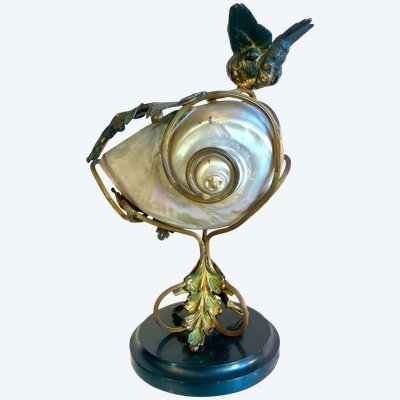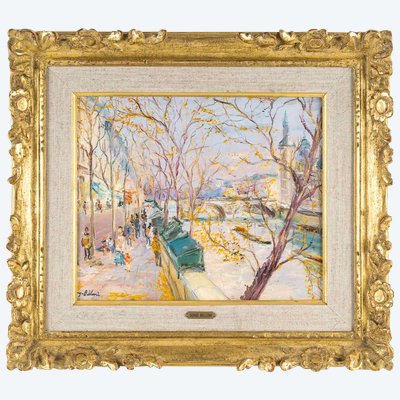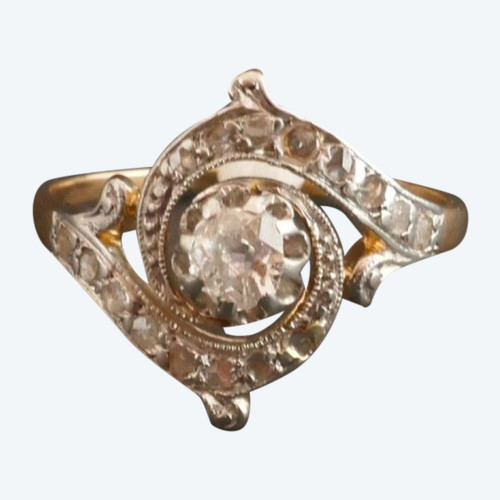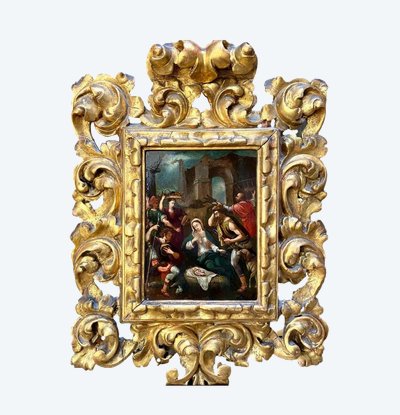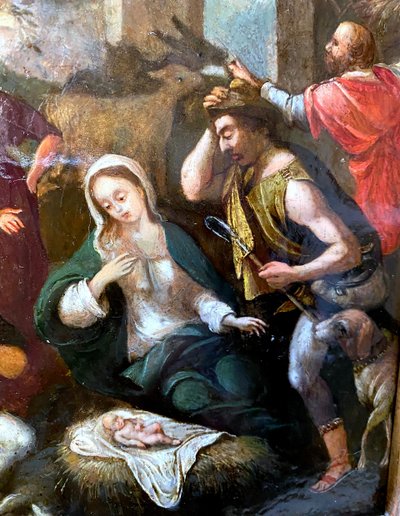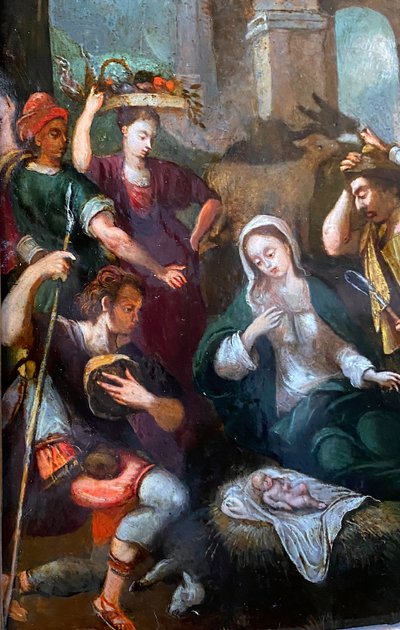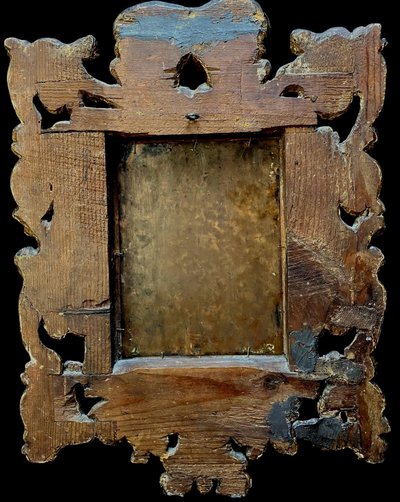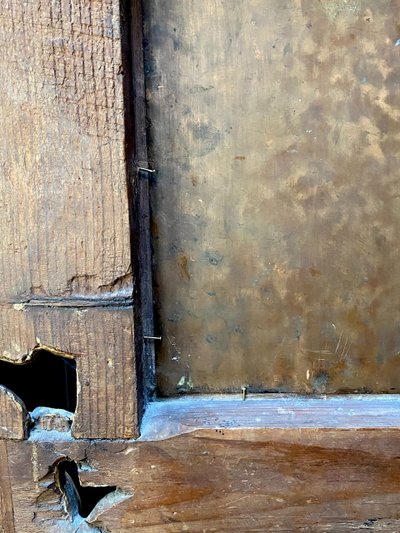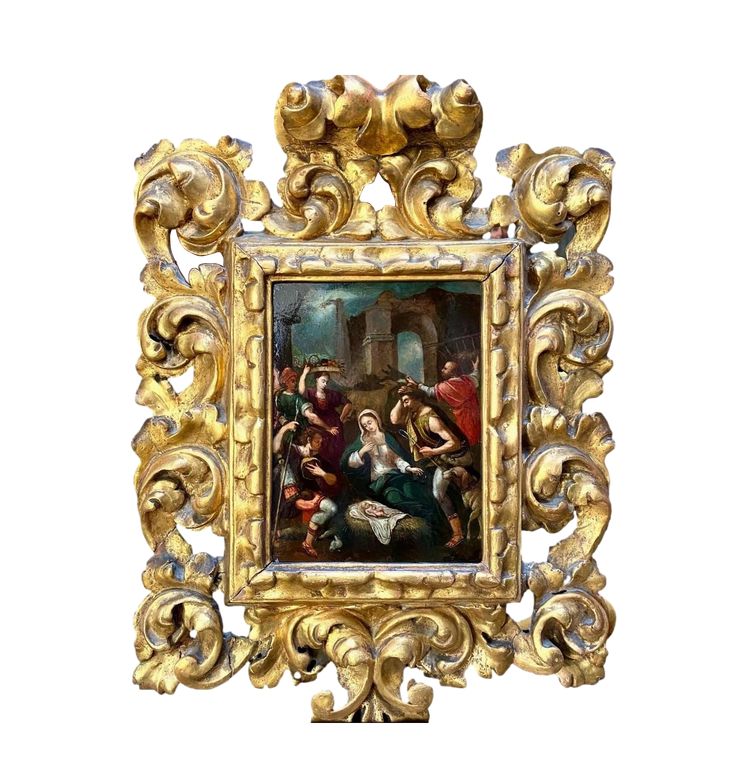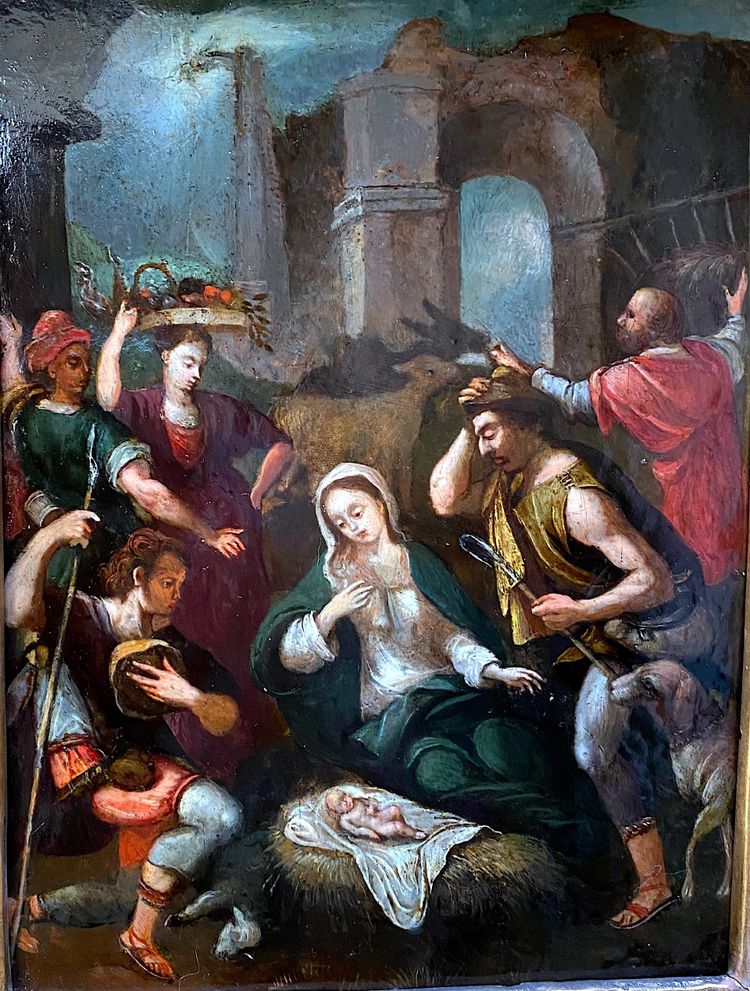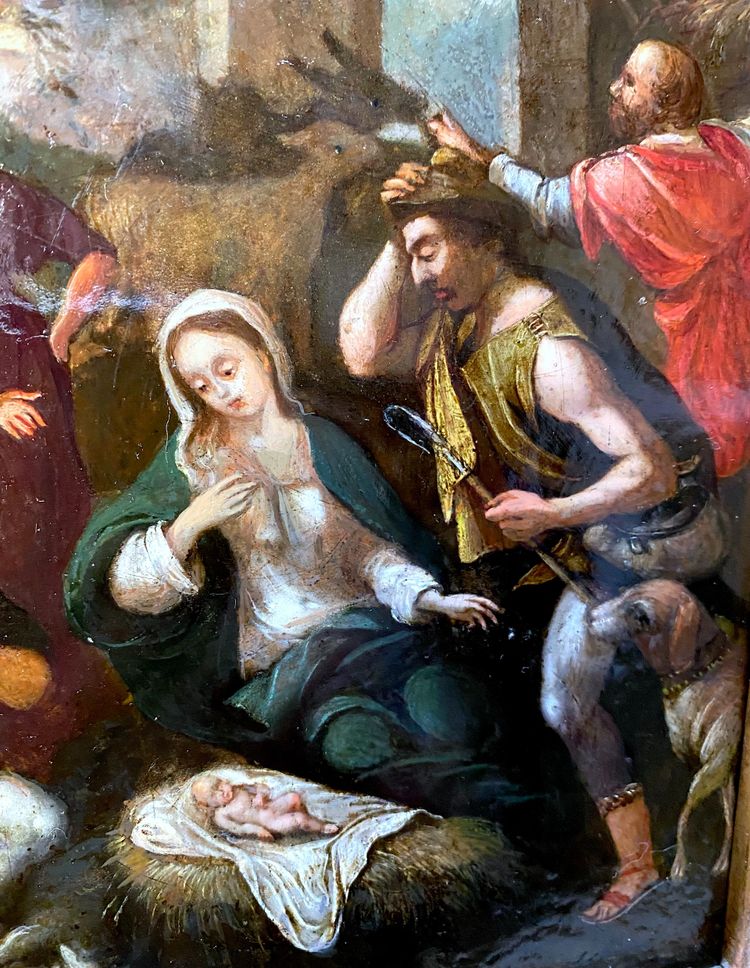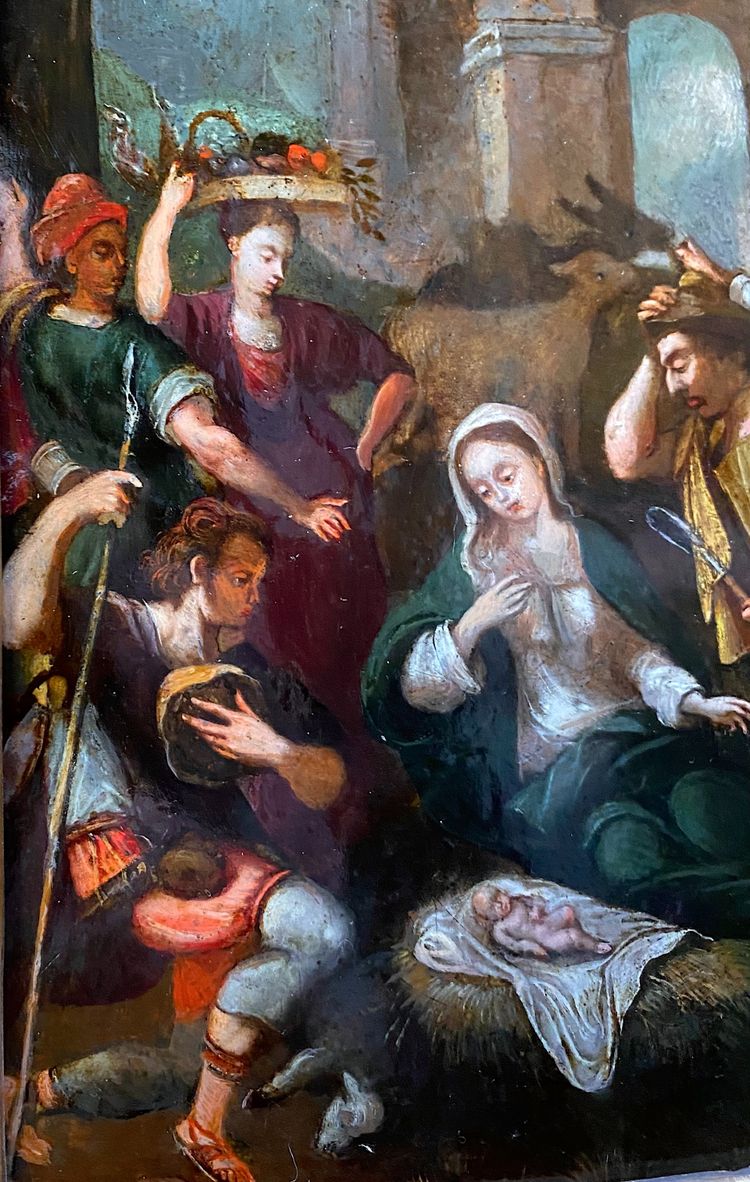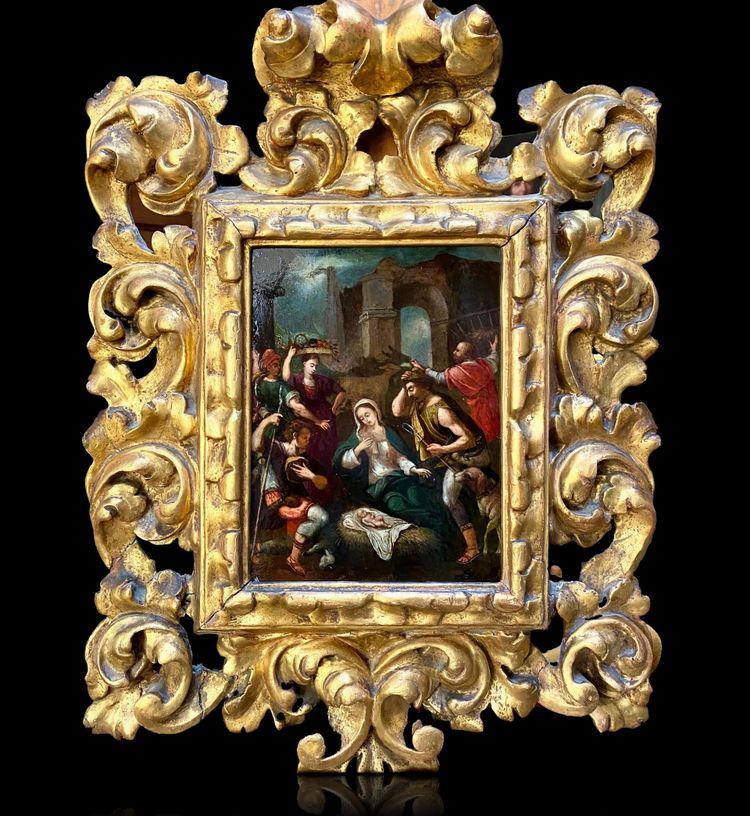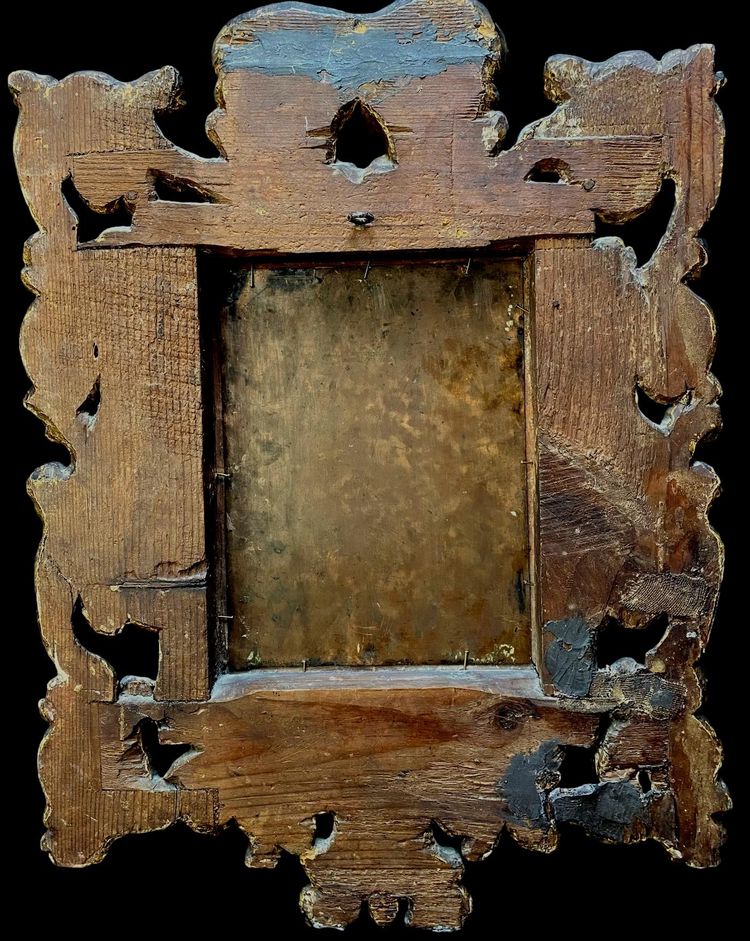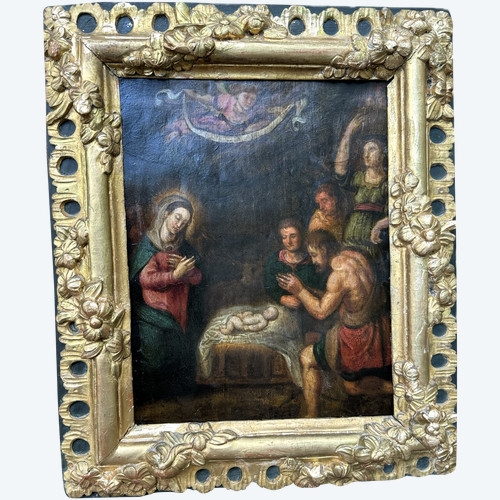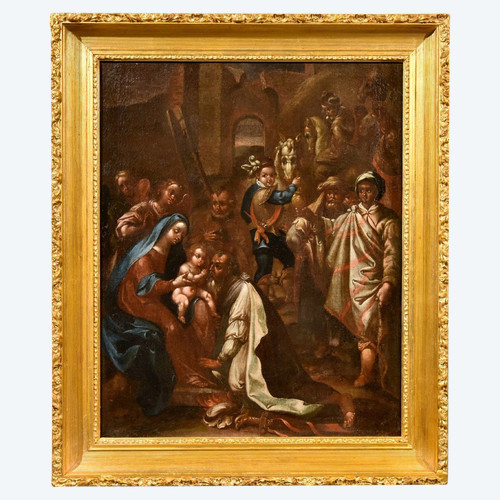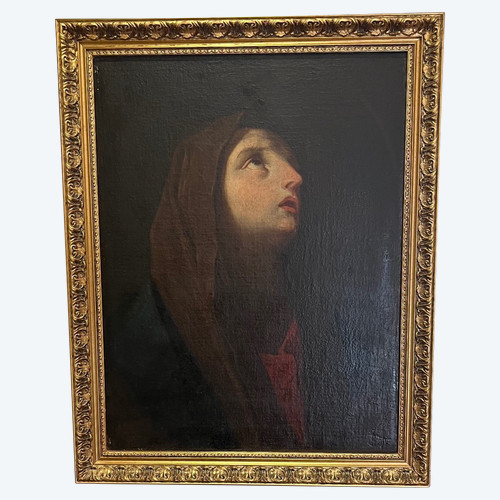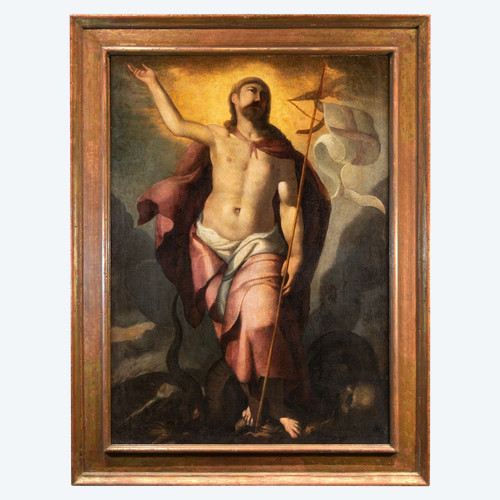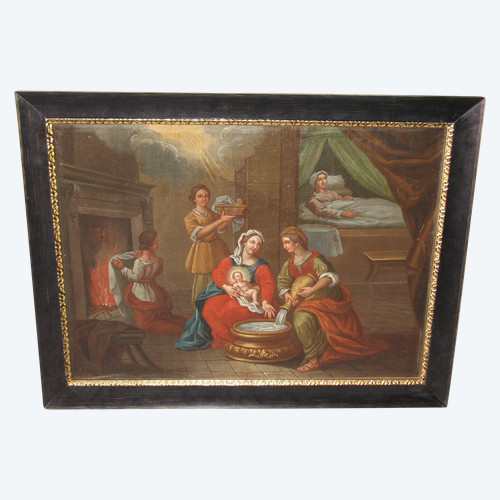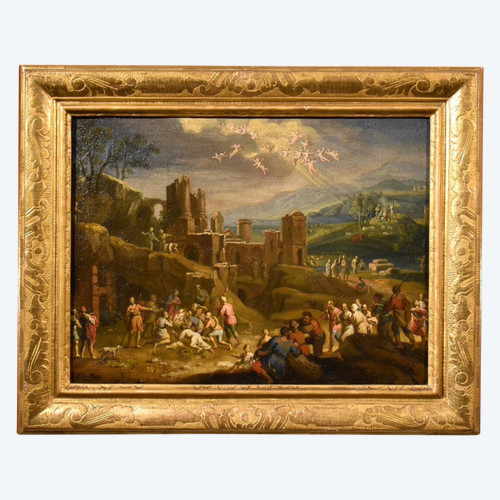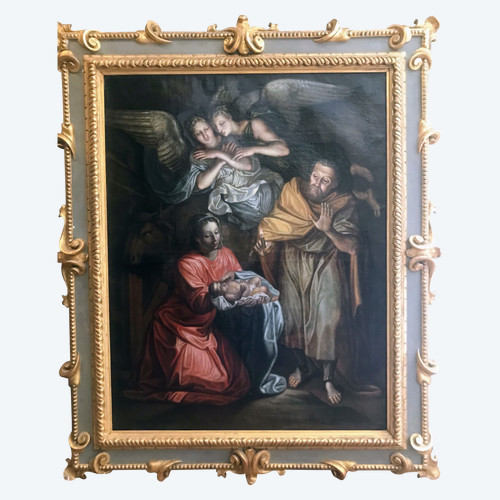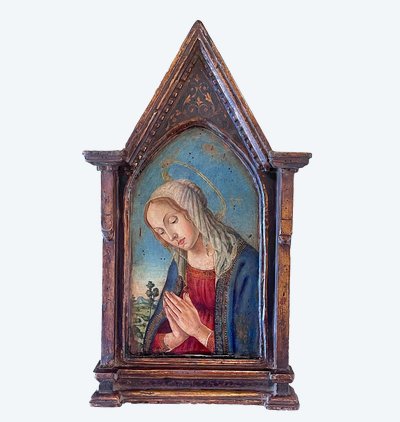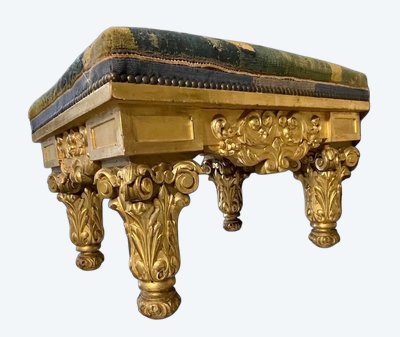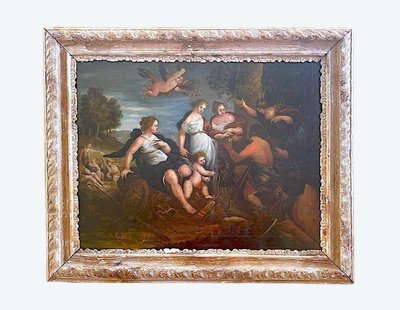This description has been translated and may not be completely accurate. Click here to see the original
A sublime old painting from the Italian School, attributable to Federico Zuccari and/or his workshop.
This work, dating from the late 16th century, features a dynamic composition and rich colors. In the center, the Virgin Mary, dressed in a dark green robe and a white veil symbolizing purity, contemplates the Infant Jesus lying on a white blanket, a subtle light emanating from him to emphasize his divine nature. Behind her, Saint Joseph, in a red tunic, feeds the donkey, embodying his role as protector. Around them, shepherds in colorful clothing (yellow, red, ochre) are gathered and admire the Newborn. A servant brings a basket of fruit, while animals (a dog, a lamb) enrich the pastoral scene. The background features architectural ruins, symbolizing the end of an ancient era, under a dramatic gray-blue sky. The giltwood frame, carved with scrolls and arabesques, adds a luxurious dimension. Crafted from oak or walnut and gilded with gold leaf over gesso, it reflects late Mannerist or early Baroque techniques, likely of Italian origin (Venice or Rome). Its wear suggests a history of prolonged display, perhaps in a church or private collection.
The pigments used include azurite or smalt for the sky, verdigris and green earth for Mary's robe, vermilion for the reds, and lead white for the light areas. These materials, typical of the period, reflect a workshop mastering traditional techniques.
Dimensions and Condition
Dimensions (without frame): approximately 23 x 18 cm
With frame: approximately 50 x 39 cm
Condition: The painting shows a natural patina; the frame shows partial restorations.
This Nativity is part of the late Mannerist period, a transitional period between the Renaissance and the Baroque (1580-1600). Influenced by artists such as Federico Zuccari in Italy, it emphasizes emotion and symbolism, with theatrical poses and contrasting colors. The ruins and divine light evoke Counter-Reformation themes, while the gilded frame reflects the aesthetic of church altarpieces or noble collections. This work testifies to the popular devotion of the period.
Provenance
Provenance uncertain, possibly from a European private collection or a church. Very careful shipping
#Zuccari #Nativity #ManneristArt #Late16thC #ReligiousPainting #VirginMary #ChristChild #SaintJoseph #Shepherds #GildedFrame #WoodSculpture #RenaissanceArt #FlemishArt #ItalianArt #ArtCollection #AncientArt #ArtHistory #SacredArt #ArtHeritage #ArtSale #ArtPassion
Excerpts from the Visual Expertise of the Work:
Analyzing the pigments of a painting like this late 16th-century Nativity can provide valuable clues about the artistic techniques, the materials available at the time, and even the potential attribution to a specific artist or region. Since this is a visual analysis (and not a direct scientific analysis like spectroscopy or chromatography), I will base my analysis on the colors visible in the image, the artistic practices of the period, and the pigments typically used in the late Renaissance and early Mannerism periods. Here is a detailed analysis:
General Context of Pigments in the 16th Century
In the late 16th century, European artists used natural pigments, often of mineral, vegetable, or animal origin, mixed with binders such as oil (especially in Flanders) or tempera (more common in Italy for earlier works). The color palette was limited compared to modern synthetic pigments, but artists mastered the art of creating vibrant and lasting hues. Expensive pigments, such as lapis lazuli for blue, were reserved for symbolically important areas (often the Virgin Mary's cloak), while cheaper pigments, such as earths or ochres, dominated more naturalistic scenes.
Analysis of the pigments visible in the painting
1. Blue (sky and background)
• Observed color: The sky in the background is a pale gray-blue, with subtle nuances.
• Probable pigments:
• Azurite: A copper carbonate (2CuCO₃·Cu(OH)₂) commonly used in the 16th century for blues. Less expensive than ultramarine, it was often used for skies or backgrounds. Its hue ranges from pale blue to blue-green, which corresponds to the shade visible here.
• Smalt: A cobalt-tinted glass-based pigment, more widely introduced in the late 16th century, especially in Flanders. It produces a translucent blue-gray, which could also be suitable for this sky.
• Natural ultramarine (lapis lazuli): Unlikely here, as this pigment, extracted from the semiprecious stone lapis lazuli, was very expensive and reserved for symbolic areas such as the Virgin's cloak.
Ref: P52BDUJR7M
 Louis XV Style Firewall Or Screen
900 € EUR
Louis XV Style Firewall Or Screen
900 € EUR
 Art Nouveau Mounted Shell, 19th Century
1.200 € EUR
Art Nouveau Mounted Shell, 19th Century
1.200 € EUR
 Art Nouveau Diamond Ring.
1.220 € EUR
Art Nouveau Diamond Ring.
1.220 € EUR


